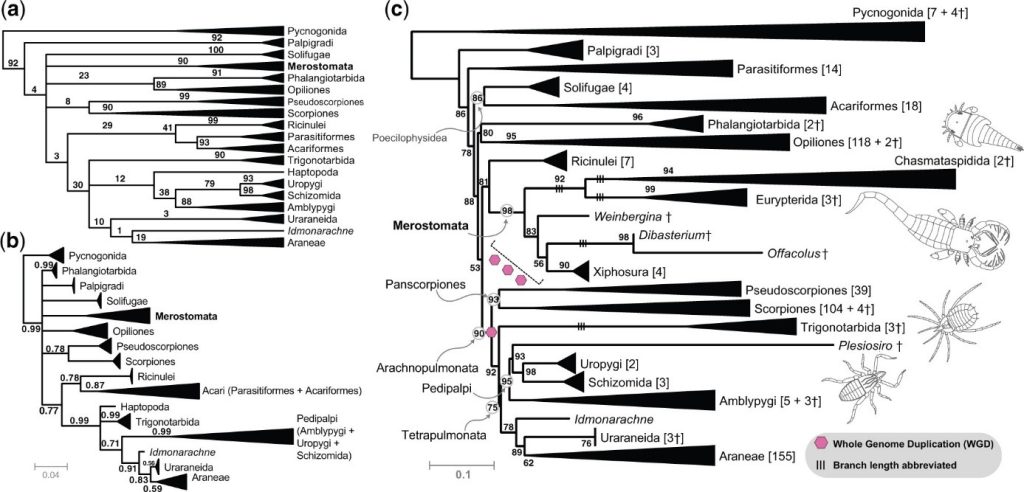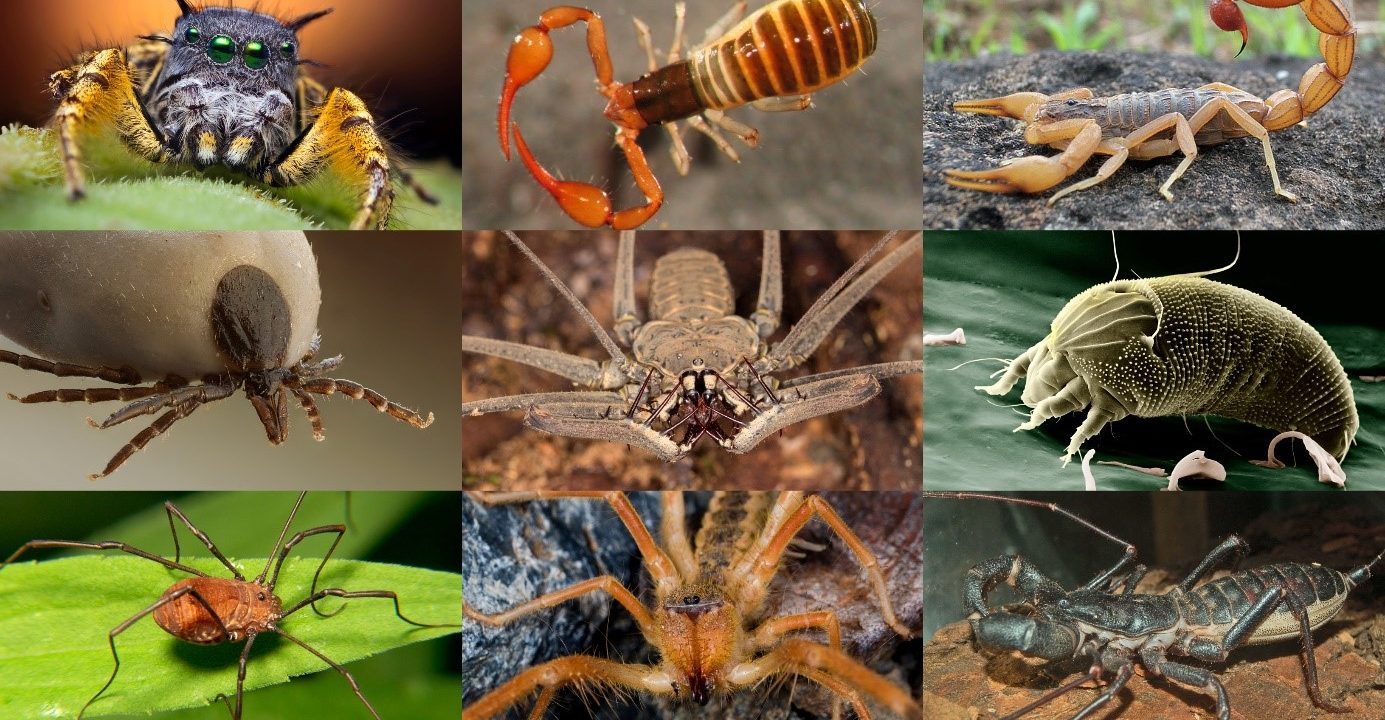The arthropod subphylum of Chelicerata are made up of three classes containing extant orders: Pycnogonida (Pantopoda: the sea spiders), Merostomata (Xiphosura: the horseshoe crabs) and the diverse class of Arachnida. Although the relationships between these three have proven difficult to untangle, the historical perception of arachnid monophyly has been nearly universally accepted, often with Xiphosura as the sister group to Arachnida. The traditional paradigm has postulated that ancestors of the monophyletic Arachnida colonized land in a single colonization event.
However, recent phylogenomic studies recover weak support for this scenario, and for the monophyly of Arachnida. One of my favourite papers of 2022, tackles this conflict, challenging the perception of arachnid monophyly. In their study titled “Comprehensive species sampling and sophisticated algorithmic approaches refute the monophyly of Arachnida”, Ballesteros et al. (2022) assembled a large data set of 506 genomes and transcriptomes from all the extant chelicerate orders to infer their phylogenomic relationships, as well as a 514-taxon matrix of morphological data analyzed in tandem with the molecular data. Pycnogonida was used as an outgroup. The authors found that their analysis consistently recovered a paraphyletic Arachnida, with Xiphosura as derived arachnids, both in the molecular data and in the total evidence approach (Figure 1).

As Xiphosura is a wholly marine group, the results from this study refutes the historical perception of a monophyletic Arachnida colonizing land in one single colonization event. The authors suggest that the morphological convergence that happens as species adapt to life on land has driven this perception. This leads me to think of several questions to be answered in future work, for instance regarding a better understanding of how the chelicerates may have actually colonized terrestrial habitats. As a master student and aspiring entomologist in the FEZ group, questions also arise regarding how these types of results can be translated into studies of other invertebrate groups.
Reference: Ballesteros et al. 2022. Comprehensive species sampling and sophisticated algorithmic approaches refute the monophyly of Arachnida. Molecular Biology and Evolution 39: msac021. https://doi.org/10.1093/molbev/msac021
![]()
